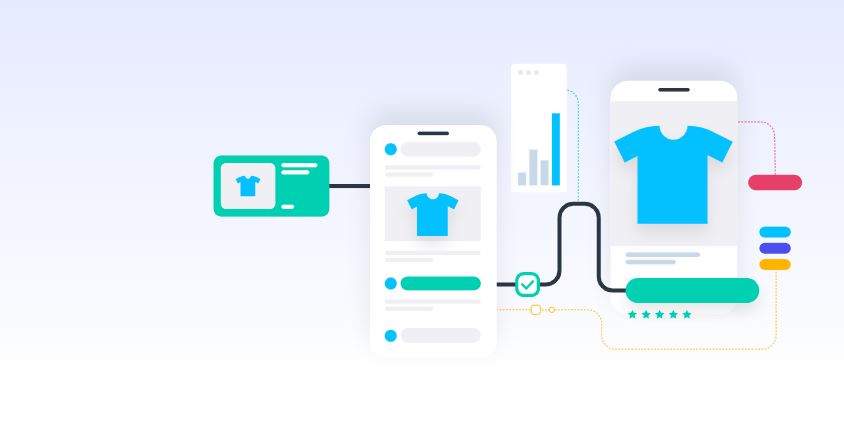
In the world of digital marketing, captivating and maintaining the interest of users has become a formidable challenge. With attention spans dwindling and the constant bombardment of information, marketers are faced with the pressing need to streamline and expedite the user journey, eliminating any barriers that may impede engagement or hinder progress through the conversion funnel. In response to this pressing demand, mobile app deep linking emerges as a pivotal strategy, offering a direct pathway for guiding users to specific content or actions within an app. This not only enhances the user experience but also significantly boosts the chances of conversion and amplifies the return on experience (ROX). This blog discusses about Mobile app deep linking.
What Is Deep Linking?
Deep linking serves as a beacon in the sea of digital noise, cutting through the clutter to address the contemporary user’s expectation for immediate and relevant content. By seamlessly directing users from ads or mobile websites to targeted in-app destinations, deep linking fulfils the user’s desire for instant gratification and tailored experiences. It stands as an indispensable tool for marketers striving to captivate audiences and forge meaningful connections with their target demographics.
Why Is Deep Linking Important?
At its core, mobile app deep linking functions as a technological marvel, seamlessly launching an app and navigating users to a specific page upon clicking a URL embedded in a web page or another app. The implementation of deep links is not merely a procedural enhancement; it is a strategic move that optimizes user journeys and drives up conversion rates. By examining the diverse applications of this technology and understanding its mechanics, marketers can harness the power of deep linking to elevate their marketing campaigns and engages their audiences more effectively.
To grasp the transformative potential of deep linking, let us embark on a journey from the perspective that matters the most – that of the customer. Imagine yourself scrolling through Facebook on your mobile device when you stumble upon an enticing ad for a mouth-watering pasta recipe. Eager to explore further, you click on the link, expecting to be seamlessly transported to the recipe within the brand’s app. However, to your dismay, the app opens on its homepage, burying the sought-after recipe among a myriad of options. Frustrated and overwhelmed, you are likely to abandon the app and return to your browsing. This disjointed experience not only dissatisfies the customer but also risks driving them away from further engagement with the brand.
From the marketer’s standpoint, this scenario represents a missed opportunity for engagement and potential conversion. However, with the integration of deep linking, the narrative unfolds quite differently. A deep link embedded in the ad would instantly transport the user to the exact page showcasing the pasta recipe, enhancing their experience and seamlessly guiding them towards conversion. The streamlined user journey facilitated by deep linking not only enhances user acquisition and ad conversion rates but also contributes to improved app retention and enhanced brand reputation.
Summary
In concluding reflections, the diverse types of deep links – whether direct, deferred, deep link fallback or contextual – offer marketers a myriad of tools to customize and optimize user experiences. By leveraging the capabilities of deep linking, marketers can navigate the digital landscape with finesse, engaging users effectively and fostering lasting relationships with their audiences. Deep linking stands as a beacon of innovation in the realm of digital marketing, offering marketers a profound opportunity to enhance user journeys, elevate conversion rates, and cultivate brand loyalty in the ever-evolving digital ecosystem.
